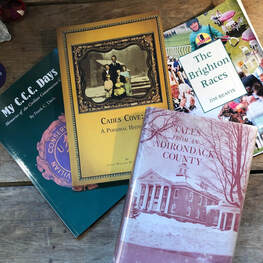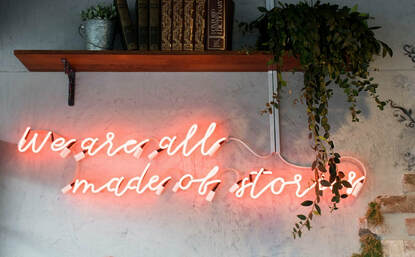|
11/23/2021 0 Comments Featured Guest on History Channel When I got the call to appear as a featured guest on the History Channel's Engineering That Built the World tv series my response was: "Me? You Sure? How did you hear about me?" I was told that the head of the history Channel recommended me. Really. Not sure if I can verify that but I will say that if it hadn't been for my blog on the Durant Family Saga probably no one would have heard of my fictional account of the family of Thomas Durant. My name is associated with this infamous family because of my relentless pursuit of information about them and blogging about the research journey. I went to the New York City A&E studios in August 2021 and spent about two hours interviewing with Karl Hollandt and his crew from Six West Media. And while they only used about three minutes of the total interview, I was thrilled to be a part of the episode about the building of the Transcontinental Railroad titled Race for the Railroad. I'm not an expert on the Transcontinental Railroad but I am well versed in the motivations behind why Thomas Durant conspired to take over the Union Pacific Railroad and control the contracts - so he could bilk the U.S. government out of millions by over charging for construction. It was the money he made during this time period (1864-69) that allowed him to acquire the half million acres in the Adirondacks which he planned to exploit as a playground for the rich during the Gilded Age. His son William was supposed to spearhead this venture and if you read my novels you will learned more about what happened to Thomas Durant's legacy. If you missed the first episode you can stream it online here.
0 Comments
9/2/2020 Wearing Our Feathered Friends While reading Edith Wharton’s Age of Innocence, set in the 1870s in New York City, I remember being taken aback by a reference to a woman carrying a fan made of Eagle feathers to the opera. Oh dear, I thought. Our national bird? A protected species? Why, just recently they stopped construction of a dock near my hometown because a pair of Eagles were nesting in the trees nearby. Then during the course of my research for my second novel in the Durant family trilogy, I came across a reference to William West Durant taking off with an Adirondack guide to shoot three Loons that had the bad luck to be stuck in a cove as it had iced-over one night in early spring (1890). Loons are heavy and can’t take off without a flyway and so, as the memoir I found at the Adirondack Museum goes, the Loons managed to keep a small opening in the ice during the night but needed the cove to melt so that they had enough space to take off. Unfortunately, they never got that chance (you’ll have to read story two to find out what happens to them). I was aghast. My modern sensibilities get in the way of my research at times. While describing ladies’ fashions during the Victorian era I had to contend with the fact that women loved wearing the artifacts of dead birds on their hats or to adorn their outfits. After all, it wasn’t until Boston socialite Harriet Hemenway and her cousin Minna started a a boycott against the practice of hunting exotic birds down to adorn lady’s hats in 1896 that the abomination of the practice came to light. Indeed, these two lady mavericks are credited with starting the Audubon Society to save birds from extinction. They first heard about the plight of birds after an amateur ornithologist, Frank Chapman, wrote about his experience watching bird hunters go after an egret rookery, plucking the feathers and leaving the young to die in the trees. Chapman is also credited with surveying for birds on the streets of New York City. In one day in 1886 Chapman counted 542 hats adorned with 174 whole birds or their parts. He claimed to have counted over forty different species of birds on ladies’ hats: pheasants, peacocks, egrets, scarlet tanagers, robins, and blue jays, just to name a few. It wasn’t until the turn of the century that it started to become unfashionable to be wearing a dead bird on one’s head, much less a bird that was considered endangered. This points to the fact that at the time, people believed our resources to be limitless, or never knew the difference and didn’t care. 4/23/2019 We Are All Made of StoriesWhile visiting my aging parents recently I attended a social gathering of their friends and neighbors. A man I was conversing with told me about his work at Eastman Kodak before its slow dissolution. When I mentioned I was an author of historical fiction and thought the history of the Kodak Company might make a good non-fiction book, he proceeded to tell me that more importantly, he wanted someone to write about the Hungarian revolt against the Soviet Union in 1956. He was part of the revolt as a teen. But he had to flee along with 200,000 other refugees, when the revolt was violently crushed by the Soviets after only 12 days. The ghost writer he had hired to write his memoir died and the idea that his story would never be written nor published was weighing on him.
This man had a best friend-a fellow comrade aged 16 who was captured by the Soviets. The Soviet's had a law that made it illegal to put someone under 18 to death, so they held his friend in prison until he turned 18 and then executed him. My mother told me that as she ages she has been having flashbacks-vivid memories of her childhood that she had long forgotten. If this is so for most people as they age (and I have no idea if it is) then I suppose for this man, his visions of the tumultuous 12 days and loss of his best friend must be haunting him. He spent the better part of an hour discussing it with me. He told me not many people know about this time in history (it was only 12 days but had greater ramifications for the U.S./Soviet relationship.) He told me the citizens of Hungary were the only ones that revolted against the Soviets although so many in the Union despised the oppression. He eyes were filled with loathing. I've met numerous writers at conferences who are there to learn how to publish a memoir. I wish my life was that interesting. Although I've used vignettes from my personal experience or people I've known for my fiction (specifically in Ephemeral Summer I wrote a scene where the main characters are tracking moose in Algonquin Provincial Forest for scientific research, something I did in graduate school), my fiction is mainly about other people's lives. Just recently I picked up a book titled: Ithaca Diaries, written by Anita Harris about her days as a college student at Cornell University in the late 1960s early 1970s. How brave to write about coming of age during the race and anti-Vietnam War riots taking place on campus. Personally, I'd rather write a fictionalized version of someone else's past. But I have a high regard for writers who feel they have an important story to tell: their own. 1/8/2019 Preserving Public History This is an ode to those public historians who went out of their way to write and publish local history that would otherwise have been forgotten. Whether it was about their own past experience, or the history of a place, these books are gems for those of us writing historical fiction. They are accounts of the ordinary people, ones who may not have been famous, but whose lives are the fabric of the past. I've found my share of these treasures while researching my novels. |
AuthorSheila Myers is an award winning author and Professor at a small college in Upstate NY. She enjoys writing, swimming in lakes, and walking in nature. Not always in that order. Archives
April 2024
CategoriesAll Adirondacks Algonquin Appalachia Award Cades Cove Canada Chestnut Trees Christmas Civilian Conservation Corps Collis P. Huntington Creativity Doc Durant Durant Family Saga Emma Bell Miles Finger Lakes Great Depression Hell On Wheels Historical Fiction History Horace Kephart Imagination National Parks Nature Publishing Review Screenplay Short Story Smoky Mountains Snow Storm Stone Canoe Literary Magazine Thomas Durant Timber Wilderness World War II Writing |
|
|
All materials Copyright 2022
Any reproduction, reprint or publication without written consent of author prohibited. |

 RSS Feed
RSS Feed